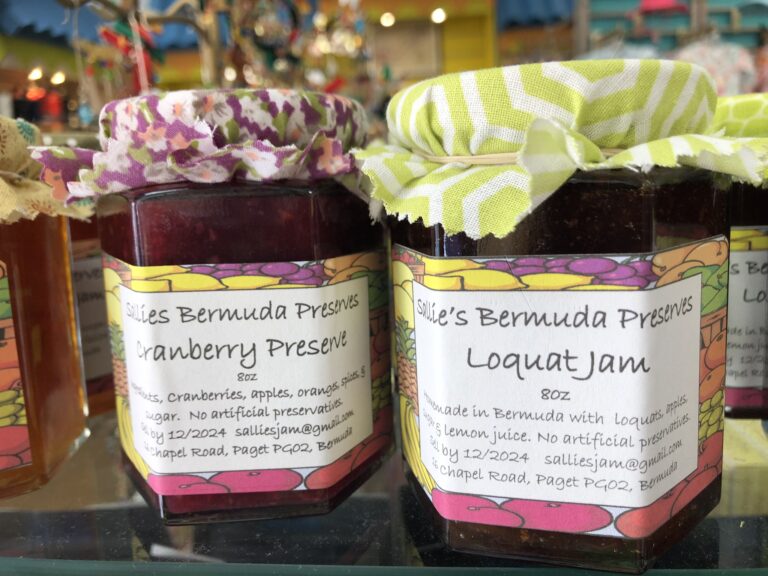In Bermuda we are fortunate to have many edible varieties of fruit growing in our gardens and laneways, but the window for harvesting these delicious treats is typically short and many varieties spoil quickly once picked.
Preserving jam at home is an easy way to ensure that you will be able to enjoy these local fruits for an extended period provided you take a couple of basic safety precautions.
Once a staple of every Bermuda pantry, many of us fondly remember the homemade marmalade, onion jam, or loquat chutney that Grannie used to make – but might not be sure exactly how to tackle this ourselves.
I sat down with Sally Godet, maker of Sallie’s Bermuda Preserves, to get some expert advice for first-timers from a jam-making pro.
What types of local fruit can be used to make preserves?
“While loquat jam is by far the most popular, you can use any type of citrus, Surinam cherries, peaches, guava, Bay grapes, natal plums, or pawpaw,” says Mrs. Godet. “Even bananas can be made into chutney – the only one that is not suitable is avocado.”
What basic ingredients do I need to make jam?
“Any jam is going to be a combination of sugar, pectin, fruit acid, and water,” she explained. “You will always need these basic ingredients in the correct proportions for the jam to set.”
What recipe should you try if you are a first-time jam maker?
“Any sort of citrus preserve is going to be the easiest because citrus jam (such as marmalade) always sets, because citrus fruit is very acidic,” she said. “You can make it from any combination of locally grown oranges, lemons, and limes.”
What sort of equipment do you need to make jam?
Generally, all you really need is a large deep pot, clean sterile jars, and lids, a wide-mouth funnel, some “Gulf Wax” (available at Gorhams), and some sort of label on which to write the production date and the type of jam that you have placed in the jar.
What basic safety precautions need to be taken?
“It is important to ensure that you are using clean sterile jars and particularly
if you are intending to sell your preserves – the jars must be new,” Mrs. Godet explained. “You can easily sterilize them by boiling them for 10 minutes to remove any bacteria that they might be harbouring.”
“Storing the sealed jars in a cool, dark place away from direct sunlight will help extend the shelf life but – always be sure to visually inspect the jars for signs of spoilage, (such as mould) before consuming them,” she cautioned.
Tried and true recipes can easily be found in the Junior League and Church Parish Cookbooks. if you need a little instant inspiration however – why not give the following recipe for Pawpaw chutney a try the next time you are faced with a tree full of ripe fruit?
Pawpaw Chutney
Pawpaws (also known as Papaya or Custard Apple) can be grown all year round and have been known to produce fruit within six months from planting. A delicious accompaniment to Rockfish or Wahoo, this chutney can also be served with cream cheese and crackers.
Ingredients:
- 2 lbs. ripe pawpaw, cubed
- 8 oz grated apple
- 1 – quart vinegar
- 6 oz raisins
- 8 oz diced onions
- ½ tsp golden mustard
- 16 oz brown sugar
- 1 tsp allspice
- 1 ½ tsp sea salt
- 1 tsp yellow curry powder
- 1 tsp ginger
Directions:
Combine all ingredients and cook, stirring gently until the mixture is thickened. Pour into hot sterilized jars and seal with wax.

